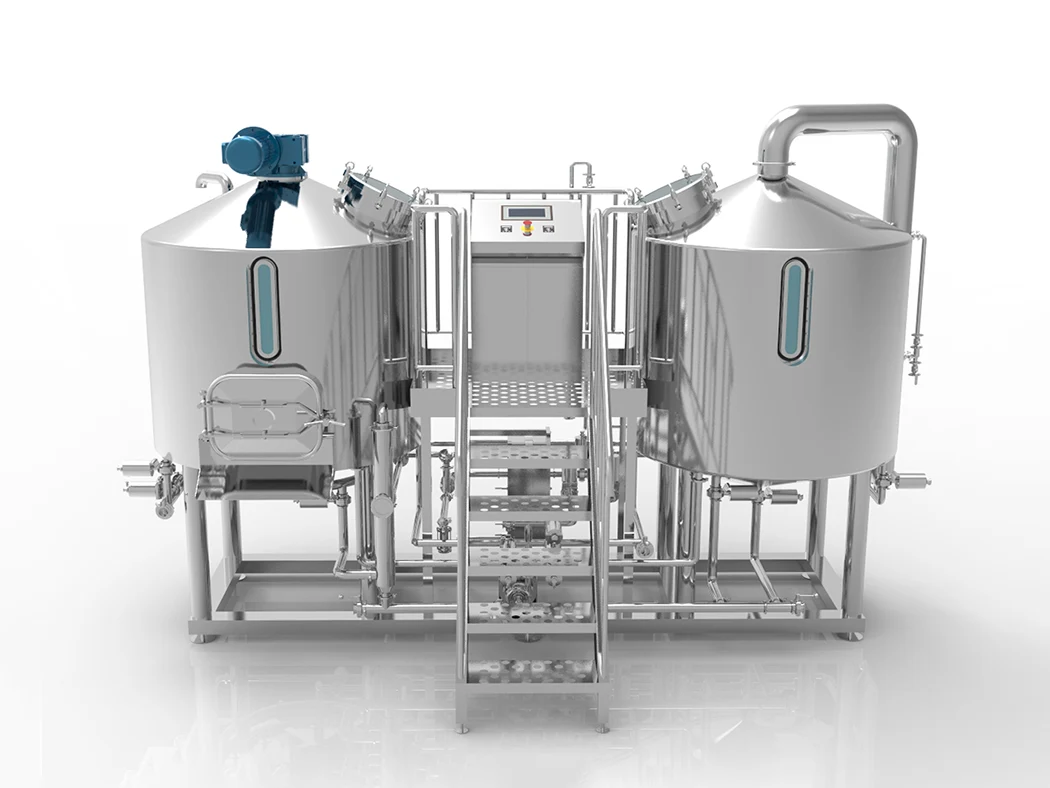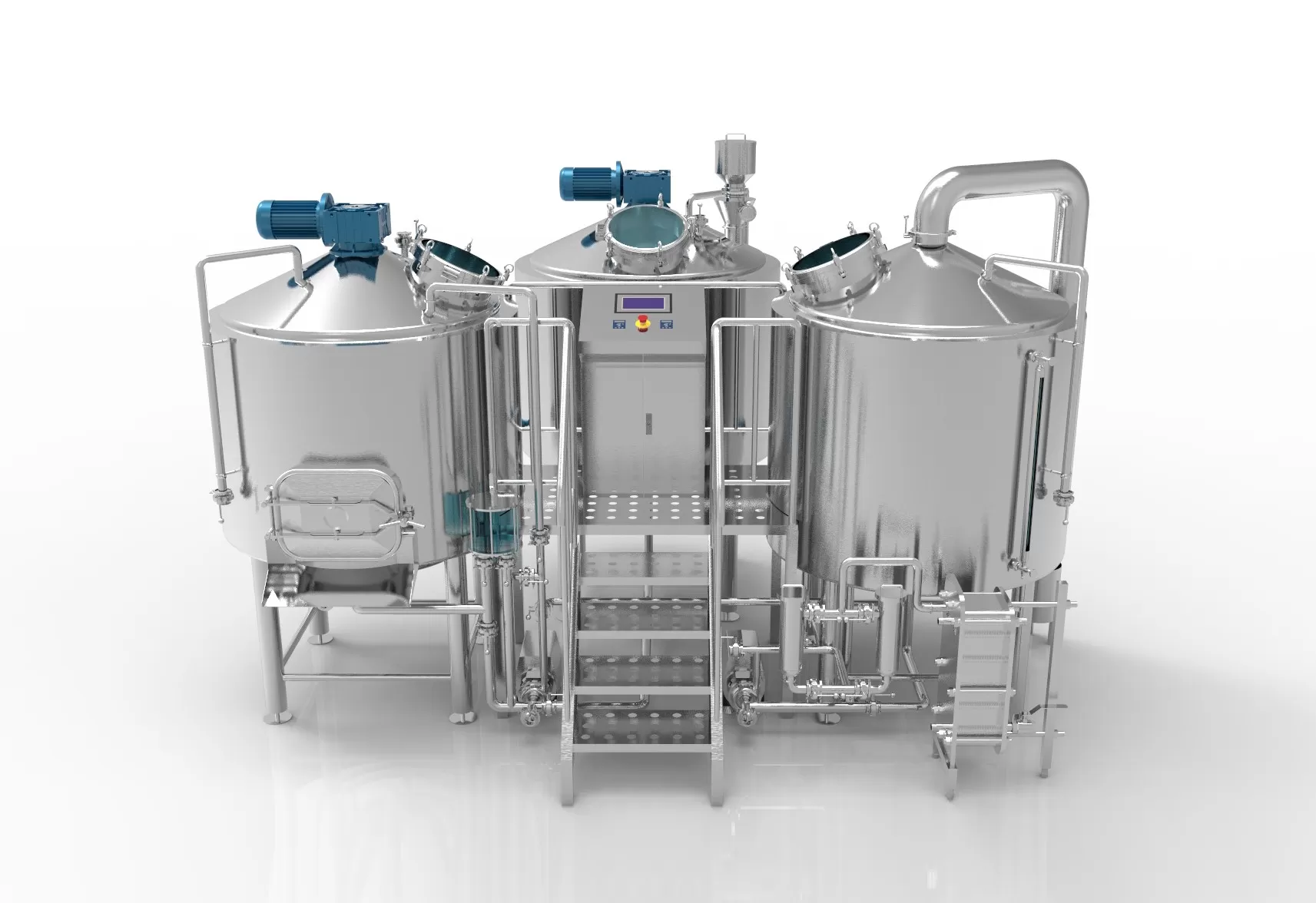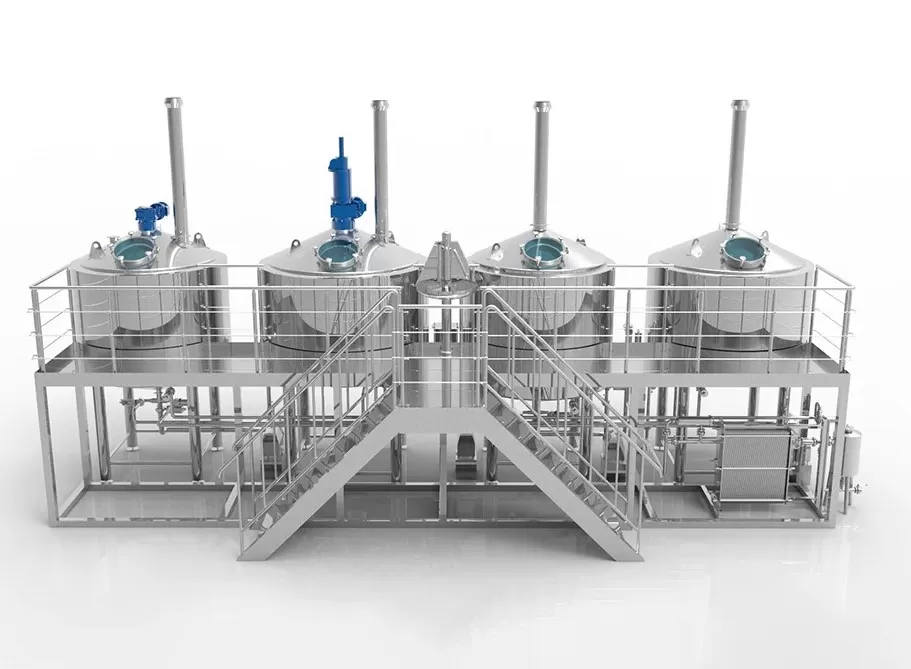Está a iniciar uma fábrica de cerveja ou a tentar fazer crescer a sua atividade atual? Finding the right equipment can feel overwhelming. Many brewers struggle with picking gear that fits their space, budget, and beer styles. When equipment doesn’t match your needs, it can lead to wasted money, inconsistent beer quality, and production delays.
Think about what happens when your brewing system can’t keep up with demand. Customers wait longer, your brand reputation suffers, and growth stalls. Even worse, poorly chosen equipment might require expensive repairs or complete replacement within just a few years.
Felizmente, existem soluções personalizadas que abordam estes desafios comuns do fabrico de cerveja. Com o parceiro certo, que compreende tanto a ciência da produção de cerveja como a engenharia de equipamento, pode construir uma fábrica de cerveja que funcione sem problemas e produza sempre uma óptima cerveja.
O que torna importante um bom equipamento para cervejarias?
Um bom equipamento de fabrico de cerveja ajuda-o:
- Fazer cerveja consistente
- Utilizar menos energia
- Poupar dinheiro ao longo do tempo
- Faça crescer o seu negócio
- Manter os trabalhadores em segurança
O mercado mundial de equipamento para cervejeiras tem atualmente um valor de $24,3 mil milhões e a crescer 7,5% por ano. Este crescimento mostra o número de cervejeiras que estão a começar ou a expandir-se em todo o mundo.
Equipamento essencial para cada fábrica de cerveja
Componentes da sala de brassagem
A sala de brassagem é a coração da sua cervejaria. Here you’ll find:
- Tina de brassagem: Onde os grãos se misturam com água quente
- Tina de Lauter: Separa o mosto líquido do grão
- Ferver a chaleira: Ferve o mosto com lúpulo
- Depósito de hidromassagem: Remove materiais sólidos
Uma sala de brassagem completa de 10 BBL custa entre $120,000-$250,000 quando novo, mas pode poupar 30-50% comprando equipamento usado.
Na Micet, os nossos Equipamento de microcervejaria de 2 embarcações 10BBL combina a tina de mistura e a tina de filtração num único recipiente, poupando espaço e dinheiro e mantendo a qualidade.
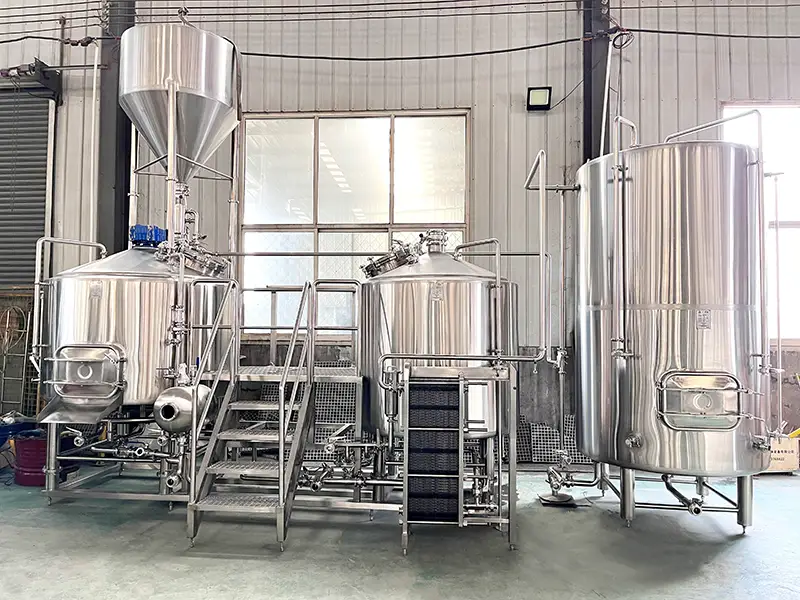
Equipamento de fermentação e condicionamento
Depois da sala de brassagem, a cerveja precisa de fermentar:
- Fermentadores cónicos: Tanques em forma de cone onde a levedura transforma o açúcar em álcool
- Tanques unitários: Tanques polivalentes para fermentação e acondicionamento
- Tanques de luz: Para carbonatar e armazenar cerveja acabada
- Sistemas de refrigeração de glicol: Mantém a fermentação à temperatura correta
Um único fermentador de 10 BBL custa $8,000-$15,000 novas. As cisternas usadas podem ser 20-40% mais baratas se as encontrar em bom estado.
O nosso Tanque de fermentação e tanques de brilho em aço inoxidável são construídos para durar mais de 15-20 anos com os cuidados adequados.
Equipamento de embalagem e distribuição
Para levar a cerveja aos clientes, é necessário:
- Linhas de produção de conservas/engarrafamento: Colocar cerveja em embalagens
- Lavadores de barris: Limpar barris para reutilização
- Projectos de sistemas: Servir cerveja diretamente
Uma linha básica de produção de conservas custa $150,000-$500,000 mas reduz consideravelmente os custos de mão de obra em comparação com a embalagem manual.
Escolher o equipamento de tamanho correto
| Tamanho da cervejaria | Capacidade de produção | Espaço típico necessário | Custo total estimado |
|---|---|---|---|
| Nano | 1-3 BBL | Mais de 1.000 pés quadrados. | $50,000-$150,000 |
| Micro | 7-15 BBL | 3.000-5.000 pés quadrados. | $250,000-$500,000 |
| Grande | 30+ BBL | Mais de 8.000 pés quadrados. | $1 milhões+ |
Muitas cervejeiras começam pequenas mas querem crescer mais tarde. A nossa Sistema de Cervejaria de Pequenos Lotes de 500L oferece um ponto de entrada acessível com espaço para expansão.
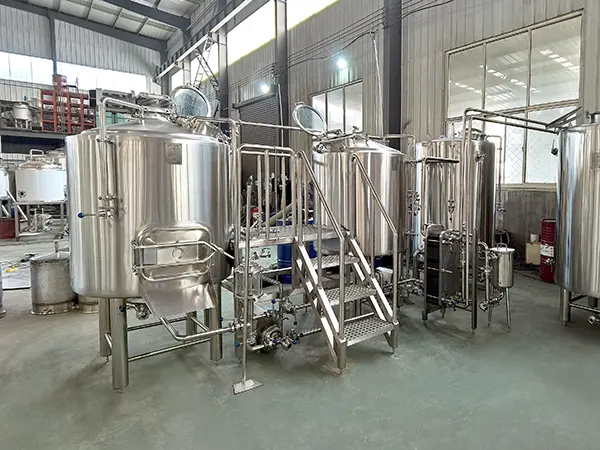
A qualidade dos materiais é importante
As melhores utilizações do equipamento de fabrico de cerveja Aço inoxidável 304 ou 316. Estes materiais:
- Don’t rust
- Don’t affect beer flavor
- Limpar facilmente
- Duram muitos anos
Acessórios tri-clamp facilitam a ligação e a separação de peças para limpeza.
Tornar a limpeza mais fácil
Os sistemas de limpeza no local (CIP) poupam tempo e água. Eles:
- Reduzir o tempo de limpeza em 25%
- Utilizar menos 50% de água
- Assegurar um saneamento consistente
De acordo com os dados do sector, 65% das fábricas de cerveja utilizam atualmente alguma forma de automatização CIP.
Estudo de caso: Sucesso no crescimento de uma cervejaria
A small brewery started with a 7 BBL system and soon found they couldn’t keep up with demand. Their beer was popular, but they had to turn away orders.
Após a atualização para uma fábrica de cerveja automatizada de maiores dimensões, aumentaram a produção em 300% e recuperaram o seu investimento em apenas 18 meses.
Como a tecnologia melhora a produção de cerveja
O equipamento moderno da fábrica de cerveja inclui frequentemente:
- Painéis de controlo: Monitorizar e ajustar as condições de fabrico da cerveja
- Bombas VFD: Alterar as velocidades de fluxo conforme necessário
- Software de fabrico de cerveja: Acompanhar receitas e dados de produção
Estas tecnologias podem reduzir a variação dos lotes e melhorar a consistência.
O custo de iniciar uma fábrica de cerveja
Starting a brewery isn’t cheap. Here’s what to expect:
- Equipamento: 40% dos custos totais
- Edifício/espaço: 20-30%
- Autorizações/licenças: 5-10%
- Ingredientes iniciais: 5%
- Outros custos: 15-30%
Os custos ocultos incluem frequentemente:
- Instalação
- Trabalhos de canalização e eletricidade
- Formação do pessoal
O nosso Sistema de fabricação de cerveja 1000L oferece um grande valor para as novas cervejeiras que estão a controlar o seu orçamento.
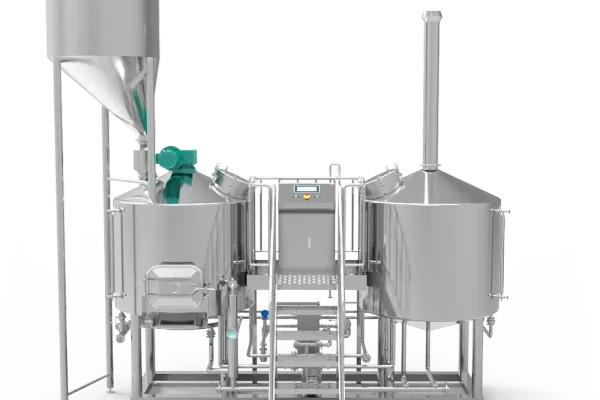
Melhores práticas de manutenção
Uma boa manutenção faz com que o seu equipamento dure mais tempo:
Tarefas diárias
- Verificar os sensores de temperatura
- Limpar resíduos visíveis
- Inspecionar as juntas e os vedantes
Tarefas semanais
- Limpeza profunda das linhas de glicol
- Testar sensores de pH
- Inspecionar as bombas
Erros comuns a evitar
- Saltar a calibração do sensor de pH
- Má conceção do sistema de glicol
- Obter reservatórios demasiado pequenos para as suas necessidades
Principais fornecedores de equipamentos
Ao escolher o equipamento, considere estas marcas de confiança:
- DME Process Systems (soluções chave na mão)
- Operações da Alpha Brewing (foco na automação)
- Sistemas mecânicos específicos (sistemas maiores)
- Micet (soluções personalizadas com mais de 15 anos de experiência)
A Micet distingue-se por oferecer tanto sistemas standard como sistemas totalmente sistema de fabricação de cerveja automatizado opções.
Energia e sustentabilidade
A produção de cerveja consome muita energia:
- Os custos de energia representam 8-12% das despesas da fábrica de cerveja
- O arrefecimento com glicol e as caldeiras a vapor consomem 60% da energia da fábrica de cerveja
- A produção de cerveja com energia solar pode reduzir os custos energéticos em 30%
Os nossos projectos energeticamente eficientes ajudam a reduzir estes custos contínuos.
Tempo de vida do equipamento
Quanto tempo durará o seu equipamento?
- Fermentadores em aço inoxidável: 15-20+ anos
- Refrigeradores de glicol: 10-15 anos
- Linhas de enlatamento: 8-12 anos
- Engarrafadores manuais: 5-7 anos
A compra de equipamento de qualidade compensa ao longo do tempo com menos substituições e reparações.
Opções de equipamento especial
Para além da produção básica de cerveja, pode precisar de:
- Equipamento de destilação para a produção de bebidas espirituosas
- Equipamento para kombucha para chá fermentado
- Sistemas móveis de fabrico de cerveja para flexibilidade
O nosso Equipamento de destilação de alta qualidade para microdestilarias e destilarias comerciais e Tanque de fermentação de Kombucha As opções permitem-lhe ir além da cerveja tradicional.
Informações sobre equipamentos para cervejarias artesanais
Repartição dos custos do equipamento
Tempo de vida do equipamento
Perguntas frequentes
Posso construir o meu próprio equipamento de fabrico de cerveja?
Sim, mas apenas para lotes muito pequenos. O equipamento de bricolage conduz frequentemente à contaminação e a resultados inconsistentes. O equipamento de qualidade profissional garante segurança e qualidade.
What’s the lifespan of stainless steel fermenters?
Com os devidos cuidados, 15-20 anos ou mais. A manutenção regular e a limpeza correta fazem uma grande diferença.
De quanto espaço necessito para uma fábrica de cerveja?
Nano breweries need at least 1,000 square feet. A 15 BBL system typically requires 5,000+ square feet. Always plan for more space than you think you’ll need.
O equipamento usado é uma boa opção?
O equipamento usado pode poupar 20-50% nos custos, mas inspeccione cuidadosamente para detetar danos, desgaste e peças em falta. Os fermentadores e as máquinas de lavar barris são mais seguros do que os componentes electrónicos.
Planeamento da instalação da fábrica de cerveja
Ao projetar a sua fábrica de cerveja, tenha em consideração:
- Fluxo de trabalho: Como é que os materiais e a cerveja vão circular no seu espaço?
- Crescimento: Será necessário adicionar tanques ou atualizar mais tarde?
- Utilidades: Dispõe de eletricidade, água e esgotos suficientes?
- Orçamento: What’s most important now vs. what can wait?
A nossa equipa de engenharia pode ajudar a criar uma disposição personalizada que maximize o seu espaço e eficiência.
Fazer a escolha certa do equipamento
Choosing brewery equipment is one of the biggest decisions you’ll make. The right system will:
- Faça os estilos de cerveja que quiser
- Adapte-se ao seu espaço e orçamento
- Permitir o crescimento futuro
- Proporcionar anos de serviço fiável
Com mais de 15 anos de experiência na criação de sistemas de fabrico de cerveja, a Micet compreende estes desafios. Os nossos Equipamento de microcervejaria de 3 recipientes 2000L representa o equilíbrio perfeito entre qualidade, eficiência e valor para as cervejeiras em crescimento.
Conclusão
Encontrar o equipamento certo para a fábrica de cerveja requer um planeamento cuidadoso, mas estabelece a base para o seu sucesso na produção de cerveja. Ao compreender as suas necessidades, o seu orçamento e os seus planos de crescimento, pode selecionar o equipamento que lhe servirá bem durante muitos anos.
Whether you’re starting small with a Sistema de Cervejaria de Pequenos Lotes de 300L ou construir uma maior 30HL 5 recipientes Equipamento para cervejarias comerciais operation, quality equipment is an investment in your brewery’s future.
The craft brewing industry continues to grow, with the global equipment market expanding at 7.5% annually. By choosing experienced partners who understand both brewing science and equipment engineering, you’ll be well-positioned to create great beer and build a successful business.

